Are Energy Drinks Safe for Athletes? Myths, Facts, and Smart Choices
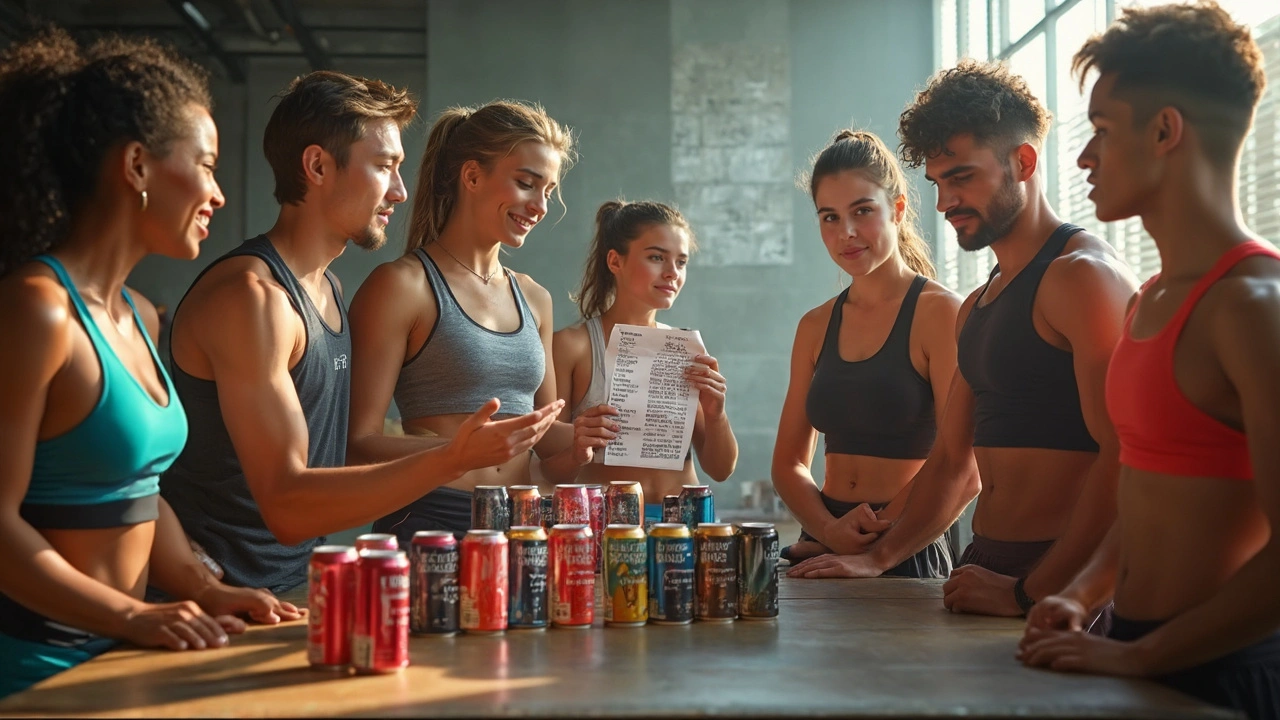
Australian college athletes cheerfully crack open cans before morning practice. Local footy teams sip fluorescent drinks at halftime. Even in Brisbane, where the subtropical heat is no joke, you’ll see athletes of every age reaching for those fizzy pick-me-ups. But here’s the twist: energy drink companies swear their products boost sports performance, but sports nutrition experts often pull a face at the very mention of them. If you’re someone who laces up sneakers more often than party shoes, it’s hard to know if these drinks help or hurt.
The Real Ingredients: What’s Actually in Energy Drinks?
Energy drinks come off as mysterious potions. The labels shout “energy complex,” “herbal blend,” “mega boost.” But let’s break it down: most of these drinks contain caffeine, sugar (sometimes way more than a can of cola), taurine, B vitamins, and sometimes plant extracts like guarana or ginseng. Some even toss in amino acids or electrolytes, which sounds sporty, but does it matter?
Caffeine is the main driver here. Most energy drinks carry between 80 mg and 160 mg of caffeine in a single can — about as much as a standard flat white or sometimes even double that. For athletes, caffeine can be a mixed bag: at certain doses, it really can sharpen focus and reduce perceived effort, so fast sprints might feel a little less painful for those first bursts. The Australian Institute of Sport notes caffeine has shown benefit in events lasting between one minute and an hour, boosting endurance and reaction time. But too much leads to jitters, anxiety, rapid heartbeat, and sometimes sleep disruption. Anyone with a sensitive ticker or those under 18? The Sports Dietitians Australia flat out say to avoid high-caffeine drinks entirely.
Sugar is another core ingredient. Some leading brands, like Monster, pack nearly 54 grams in a regular can. That’s almost 13 teaspoons! While a little sugar can boost energy right before a serious workout, gulping it down often and outside of training can spike blood sugar, crash energy, and mess with long-term recovery. Diet versions swap in artificial sweeteners which haven’t been fully tested for daily use by active people long-term.
Taurine is often flagged as a feature ingredient, but research on its athletic impact? Pretty thin. Most of us get enough taurine from food. And plant extracts like guarana (which actually contains even more caffeine) pile on stimulants without you even noticing. Not all these ingredients are listed with clear doses, so you can’t always tell what you’re getting. It’s honestly a guessing game unless you do some deep-dive research before every purchase.
B vitamins do help support metabolism, but the levels in an energy drink often far exceed daily needs — your body just flushes out the extra. Electrolytes are nice if you sweat buckets, but the small amounts found in energy drinks don’t equal proper sports rehydration formulas you’d get from, say, a dedicated electrolyte drink or oral rehydration solution.
Here’s a quick look at some typical amounts you might find in common cans, just to put it in perspective:
| Ingredient | Average Amount (per 250ml can) | Function |
|---|---|---|
| Caffeine | 80-160mg | Stimulant, boosts focus/performance |
| Sugar | 27-54g | Immediate energy spike |
| Taurine | 1000-2000mg | Amino acid; limited proven effect |
| B Vitamins | 20-200% RDI | Metabolism support |
| Guarana | ~40mg caffeine equivalent | Added stimulant effect |
So, there’s nothing magic about the mix. The star is caffeine. It acts fast, but also raises the risk for a rough ride — especially if you’re already tired, low on sleep, or have a sensitive stomach.
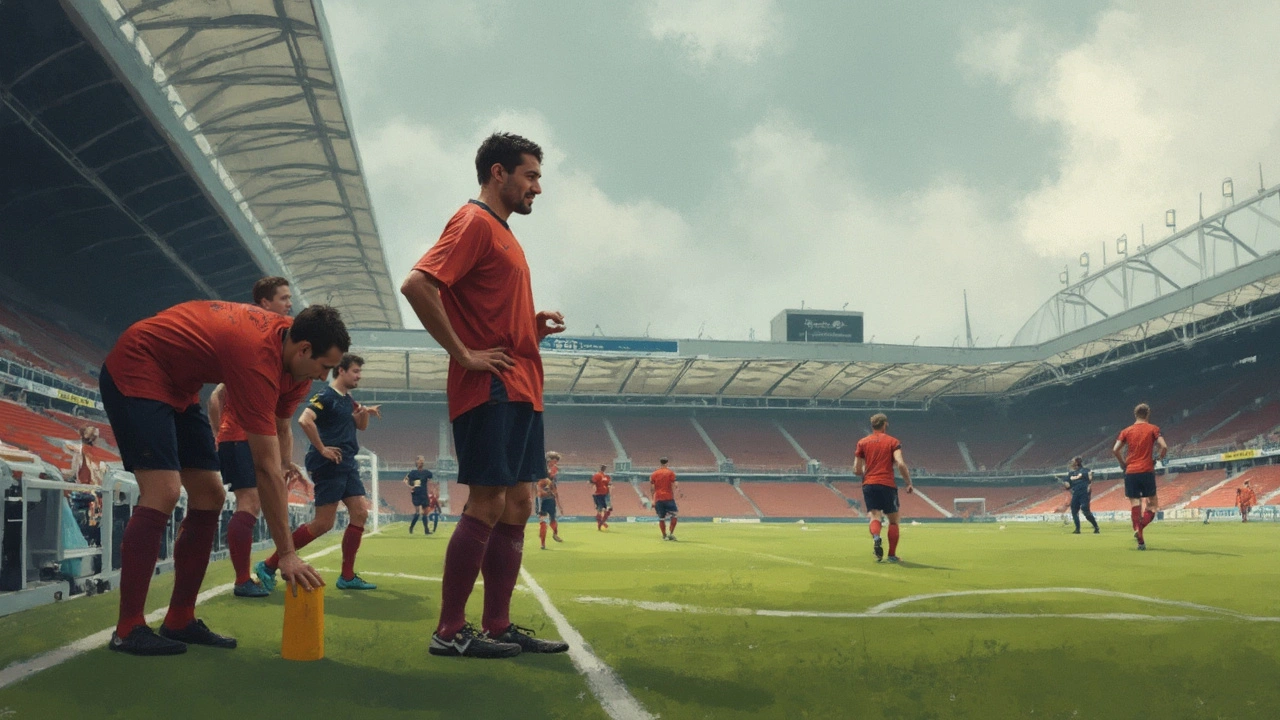
Real Risks for Real Athletes: Side Effects and Performance Myths
If advertisements made the rules, energy drinks would turn you into a sports superstar overnight. Reality, though, is much less slick. The biggest myth is energy drinks make you stronger or faster without side effects. What actually happens depends on your sport and your body. Sure, caffeine at the right time can give your brain a nudge, but it won’t fix poor fitness or replace chasing real sleep and proper meals.
First thing you notice after a can? You might feel hyped, talk faster, or want to jump into burpees. But as workouts push on, especially in hot Aussie summer, those same drinks may actually drag performance down. A 2023 review in the British Journal of Sports Medicine found energy drinks increased muscle power in short bursts but didn’t improve endurance or recovery in most athletes. Some people also found themselves needing toilet breaks way too often, thanks to caffeine’s mild diuretic effect combined with high sugar. Not ideal in the middle of a marathon or long tennis set.
The risk climbs even higher in team sports under pressure. Ever had post-energy drink jitters on game day? Several NRL junior athletes I’ve talked to said they felt anxious, lightheaded, or dehydrated after sipping cans at halftime—pretty much the opposite of “game ready.” It isn’t just nerves; caffeine raises heart rate and blood pressure. If you’re already on edge, this can push you over. In extreme cases, researchers at the University of Sydney recorded arrhythmias (serious heart rhythm issues) in fit college students after they doubled up on cans plus pre-workout formulas. That’s rare, but it happens.
If you throw diabetes or family heart history into the mix, there’s even more reason to steer clear. The American College of Sports Medicine released a statement in late 2024 warning young athletes and those with chronic conditions against “routine” use of energy drinks, especially when combined with alcohol or other stimulant supplements.
Kids and teens? No-go. Most Aussie state sports bodies, along with the Australian Medical Association, say players under 18 should not drink them due to the risk of jitteriness, high blood pressure, and impact on sleep and development. Some local Brisbane primary schools have even banned cans at carnivals altogether. A bit strict, but the concern is real.
Aside from heart and stomach complaints, there’s the silent problem of hydration. All that caffeine and sugar doesn’t hydrate — if anything, it can speed up fluid loss, leaving you hitting the wall sooner. The Sports Dietitians Australia warn athletes in endurance events or training in heat (anyone running the Gold Coast Marathon, for example) to avoid these drinks and stick with water or dedicated sports drinks designed for hydration and electrolytes.
Let’s be honest — if energy drinks were the secret weapon, every pro would slug them before their records. But look at locker rooms during the Olympics or NRL grand finals; you’ll actually see water bottles and targeted sports gels more than cans of energy drinks.
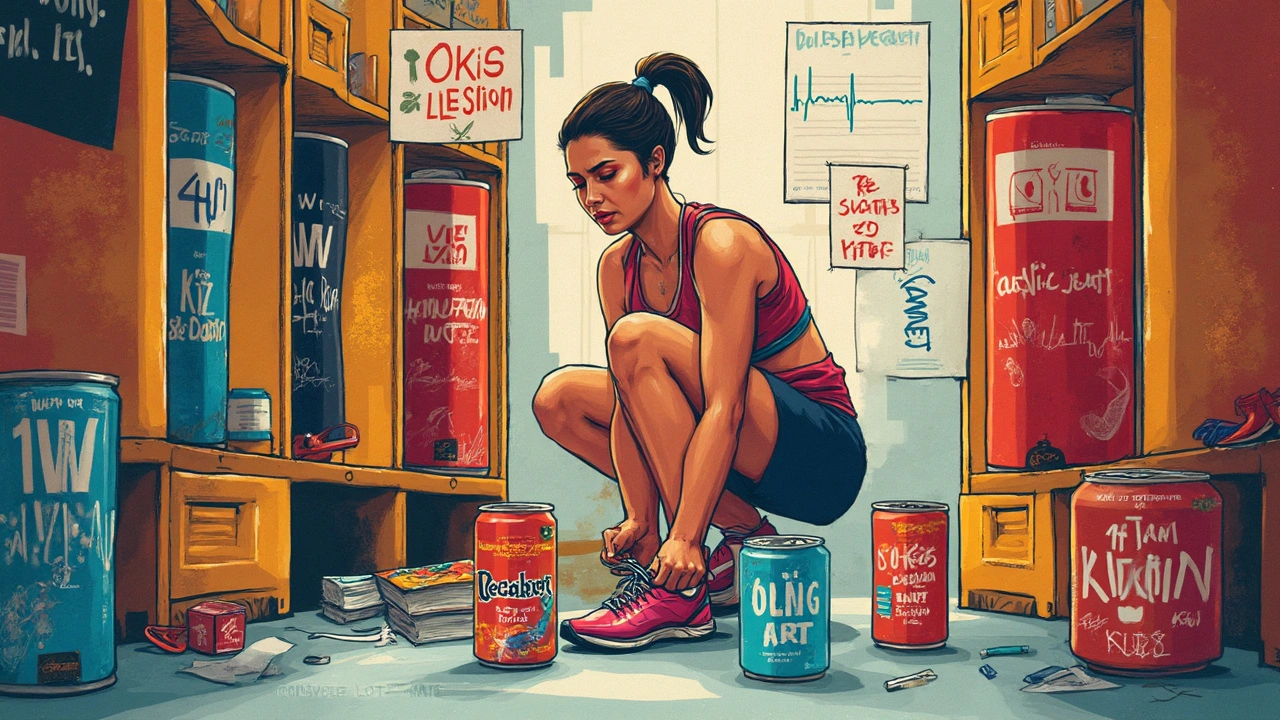
Smart Swaps and Evidence-Backed Strategies for Boosting Sports Performance
Okay, so if energy drinks aren’t miracle potions, what’s better? The best tools for athletes usually fly under the radar. Reliable energy doesn’t come from a can — it starts before you even reach for your boots: good sleep, solid meals, and proper hydration. Sounds boring, but it works.
If you need a boost before training, nutritionists recommend having a small carb-rich snack around an hour before your session. Think banana, toast with jam, or even a muesli bar with low sugar. These give you actual, usable energy, not just the illusion of pep from caffeine and sugar.
For those who swear by caffeine as a pre-game ritual, tea or coffee in modest amounts offer a known dose and fewer surprises ingredient-wise. Black coffee gives you that mental lift without a sugar crash or unexpected additives. The trick is not overdoing it: about 3-6 mg caffeine per kilogram of your body weight, taken 30-60 minutes before your hard session, is what research points to for best results. Over 400 mg a day isn’t safe for most adults — and a double energy drink plus pre-workout scoop can easily push you past this, so keep count.
The hydration question matters so much for athletes in places like Queensland. Simple water works for most sessions under an hour. For longer or sweatier workouts, sports drinks offering electrolytes but low in added sugar are a smart move. Don’t want all the sugar? Make your own: half water, half juice, add a pinch of salt. This hydrates, replaces lost sodium, and doesn’t overload your gut.
- Tip: Track your caffeine sources. If you’re already having coffee or tea, rethink that extra energy drink.
- Check labels — some brands tweak caffeine and sugar quietly, so your usual can might suddenly pack more punch than last week’s version.
- Never mix energy drinks with alcohol, no matter how much your mates swear by it. The stimulating effects hide symptoms of intoxication and increase dehydration and injury risks.
- If you’ve got a heart condition, high blood pressure, diabetes, or you’re on medications, check with a doctor before having any high-caffeine drink.
- Keep an eye on sleep. A late afternoon energy drink will almost always cut the quality of your sleep, which hits recovery and mental sharpness far harder than any missed sugar rush.
- For kids and teens, stick with water, milk, or appropriate sports drinks when needed — not energy drinks.
For big competitions, pay attention to whether your federation or league bans any ingredient found in certain energy drinks. Some “herbals” or stimulants aren’t allowed under anti-doping rules, and a “harmless” can could land you in hot water without meaning to.
The last word? No shortcut will ever beat training smart, eating well, and staying hydrated. My cat Whiskers is a champion sprinter (across the living room, at least), and even he gets his pep from proper food — not from chasing shiny cans. You get out what you put in: real food, real rest, and mindful fueling. If you reach for a can, do it knowing exactly what you’re choosing, and have a water bottle as your backup. Your body will thank you — maybe even your teammates will too.


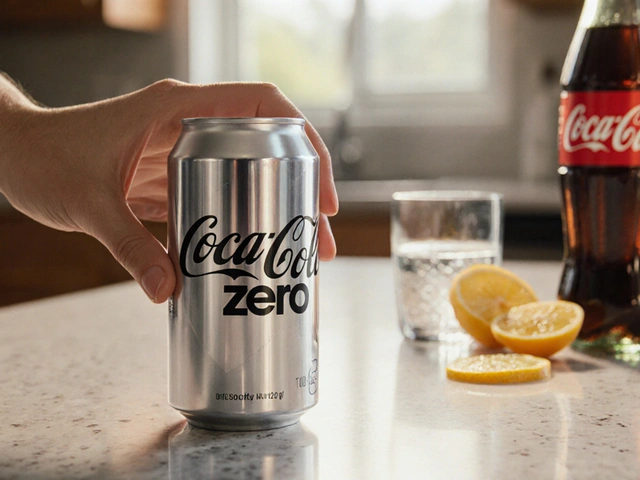
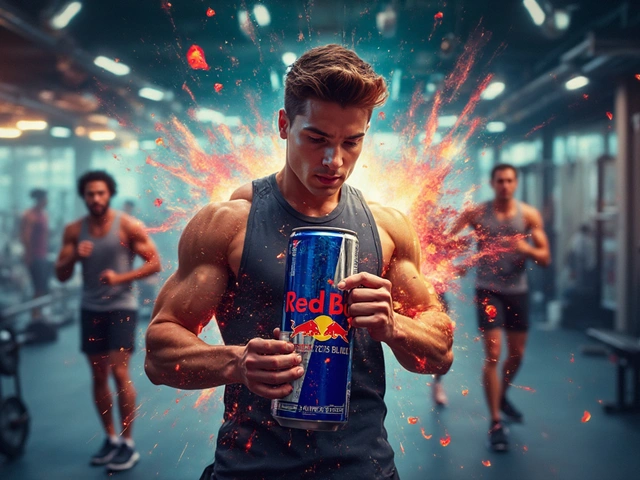
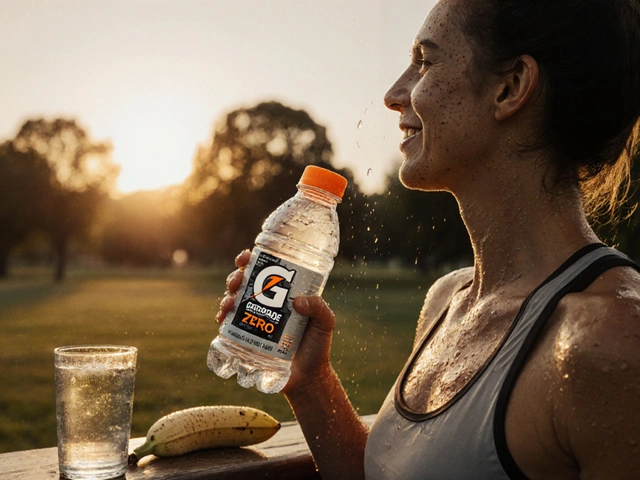
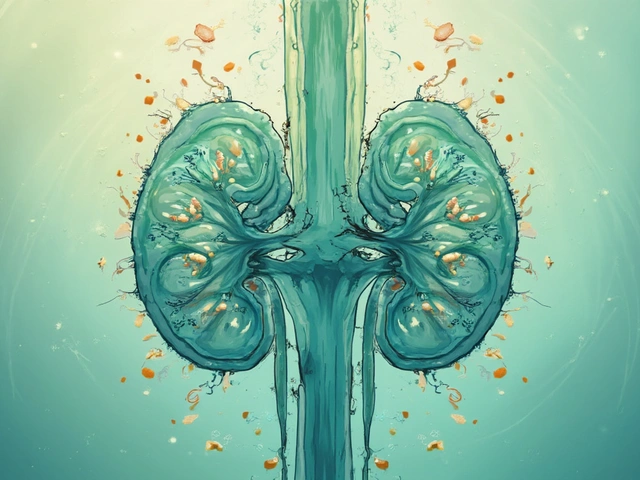
Comments (10)
Liam Hesmondhalgh
18 Jul 2025
Honestly, I don’t see why we keep glorifying energy drinks for athletes when half the time they’re barely worth the hype. First off, the grammar in the article was perfect, credit for that. But let’s get to the point: caffeine and sugar overload is not a performance enhancer; it's a quick crash in disguise.
People often miss the fact that energy drinks can cause heart palpitations and anxiety, which can ruin an athlete’s focus and endurance in a real game situation. Also, there’s this ridiculous myth that these drinks hydrate you, but guess what? They actually dehydrate you because of all the caffeine acting like a diuretic.
I’m all for smart choices, but maybe athletes should be looking at proper nutrition and rest instead of these sugar bombs. If you’re gonna shout about science-backed facts, show more data on long-term impact, not just flashy short-term boosts. Just saying.
Patrick Tiernan
22 Jul 2025
yeah i mean like what’s the big deal tho energy drinks have been around way longer than some ppl claim and ppl still choose to consume them. chill with all the science jargon – this article barely scratched the surface it felt like.
it just reads like a lazy attempt at convincing us not to drink something ppl enjoy, without giving real alternatives. also don’t forget half the time these energy drinks taste awful so who actually drinks more than one anyway?
i think the author could’ve at least provided some actual insights on natural alternatives or supplements if they were so concerned. way too much fear mongering for just a few caffeine-related effects.
Jennifer Kaiser
26 Jul 2025
I appreciate the effort to shed light on this topic, but let’s dive deeper into the ethical aspect as well. Athletes often face immense pressure to perform and might turn to energy drinks as a quick fix. The article hints at the physiological effects but doesn’t address the psychological dependency that can develop.
Moreover, the environmental impact of disposing of countless cans is worth mentioning—something athletes who care about a holistic approach to health might want to consider. Are we fostering a culture of quick energy at the expense of sustainability and mental well-being?
Smart choices mean more than just reading labels; they require awareness of how these products fit into the bigger picture of an athlete’s life.
TIARA SUKMA UTAMA
31 Jul 2025
Also, why is nobody talking about how cheap energy drinks are compared to other supplements? That’s gotta play a role in why they’re so popular at gyms and sports places. Not everyone can spend a ton on fancy protein powders or fancy nutrition shakes.
But just because it’s cheap doesn’t mean it’s okay to chug them constantly. Moderation should always be the rule. I wonder though, what energy drinks do to long term muscle recovery? The article didn’t touch that at all, and it’s a big deal for athletes.
Would be cool if someone posted research on that, cause I’m curious now.
Marissa Martin
5 Aug 2025
Feeling skeptical about this whole energy drink craze. From a moral standpoint, pushing these products in athletic settings feels a bit wrong, especially considering the addictive substances involved. Even if the article is neutral, I can’t help but feel these drinks exploit the vulnerabilities of athletes who just want to perform their best.
Encouraging natural energy through diet and rest should be paramount. Anything else feels like cheating your body in the long run. The article lightly touches on the myths but doesn’t call out the ethical issues hard enough.
We need more responsible messaging than these vague “use smartly” phrases.
Dmitriy Fedoseff
9 Aug 2025
From a cultural and scientific perspective, energy drinks have always been controversial. The article does well by dissecting myths versus facts, but for an athlete, the context of use matters most.
One must be conscious about timing, quantity, and personal tolerance. Not all caffeine responses are equal globally, and genetic variances sometimes affect how energy drinks hit you.
I’d advise any athlete interested to pair this knowledge with a consultation from a sports nutritionist rather than rely on canned wisdom. Remember, performance isn’t about just feeling hyped; it's the science of sustaining energy smartly.
Sally McElroy
13 Aug 2025
The whole idea of energy drinks seems like a band-aid solution to me. You’re masking tiredness and fatigue but not really fixing the root problem. The article gave some decent info but didn’t touch on how these drinks might affect sleep patterns for athletes, which is critical.
Also, there’s an entire culture built around these drinks that sometimes ignores the creeping risks over time. I think athletes need to be extremely cautious and question the sources pushing these beverages.
What I would like to see is research comparing energy drinks with more natural energy boosters, like ginseng or green tea. That would add more depth.
Angelina Jefary
13 Aug 2025
Absolutely convinced there’s a hidden agenda behind promoting energy drinks at sports events! They’re packed with chemicals designed to hook the user and boost sales, not performance. The article tiptoed around this but didn’t call it out.
Caffeine addiction is real and can mess up your heart and brain in ways the manufacturers don’t want you to know. And why are the effects on mental health ignored? These products have a dark side nobody’s talking about openly.
It’s not just a beverage, it’s a corporate trap disguised as a quick energy fix.
Jasmine Oey
14 Aug 2025
This article was a little too basic, honestly. Energy drinks aren't some magical elixir for athletes. The author seemed to be trying so hard to sound smart but missed the mark on exploring the cultural phenomenon around these drinks.
Like, there’s a huge social aspect to why athletes pick these up besides the science — peer pressure, marketing, hype. It’d have been way more interesting to explore that angle instead of the typical health warnings nobody really reads.
But I get it, maybe the goal was to keep it simple for the masses. Still, I think the piece could have had a bit more flair and drama… you know, to hook us in emotionally.
Cynthia Lamont
17 Aug 2025
Can we just talk about how energy drinks often get a free pass despite their clear risks? This article was nice and clean but missed calling out the toxicity of some ingredients that should never be consumed in such quantities, especially by young athletes.
Honestly, I’ve seen people gulping down cans like it’s water, not caring about the cumulative damage to their bodies. The article’s smart tips were a joke in the face of widespread reckless usage.
The marketing plays to young people’s emotions and ignorance too hard, and no amount of “moderation” advice is gonna fix that. Athletes, especially those under pressure, need to be better educated and protected.